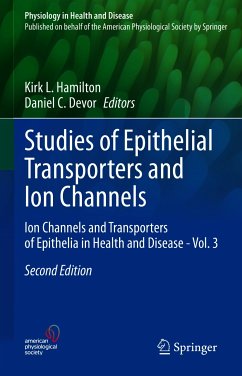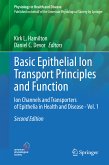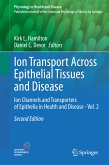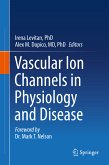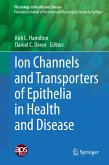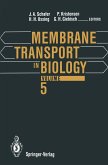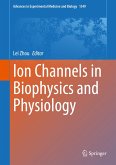This book discusses unique ion channels and transporters that are located within epithelial tissues of various organs including the kidney, intestine, pancreas and respiratory tract. The authors will show, that each of these channels and transporters play crucial roles in transepithelial ion and fluid transport across epithelia and their responsibility in maintaining homeostasis. The reader gains an understanding of the fundamentals of epithelial ion transport, in terms of function, modelling, regulation, trafficking, structure and pharmacology. This is the third of three volumes highlighting the importance of epithelial ion channels and transporters in basic physiology and pathophysiology of human diseases.
The focus of this volume lies with different ion channel and transporter families. Additionally, this volume benefits from pharmaceutical contributors and their insights into recent pre-clinical drug discovery efforts and results from clinical trials. Overall, these chapters offer a more thorough coverage of individual epithelial ion channels and transporters from the 1st Edition, along with eleven new chapters. That makes Volume 3 an insightful contribution for physiology students, scientists and clinicians.
Dieser Download kann aus rechtlichen Gründen nur mit Rechnungsadresse in A, B, BG, CY, CZ, D, DK, EW, E, FIN, F, GR, HR, H, IRL, I, LT, L, LR, M, NL, PL, P, R, S, SLO, SK ausgeliefert werden.

